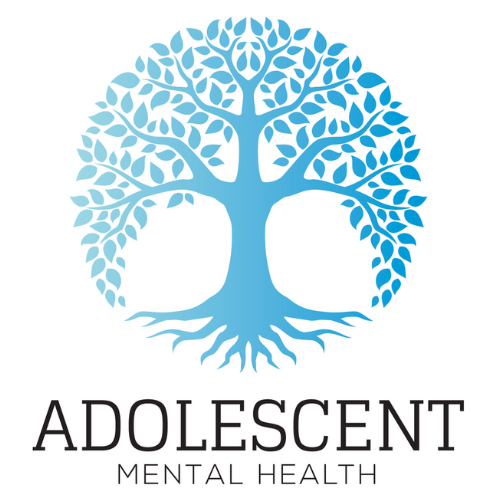Perfectionism in Teens: Breaking the All-or-Nothing Pattern to Manage Anxiety and Fear of Failure
Perfectionism in teens is a pattern of setting unrealistically high standards and evaluating self-worth based on flawless performance, and it often ties directly to all-or-nothing thinking that magnifies anxiety and fear of failure. This article explains how perfectionism shows up in adolescents, why it develops, and practical steps teens and families can use to interrupt black-and-white thinking and reduce distress.
You will learn to recognize behavioral and cognitive signs, understand environmental and temperamental causes, practice CBT-style challenges and DBT-informed emotion skills, and try concrete exercises to build a growth mindset. We also map when parental support is sufficient and when structured clinical care is warranted, including how virtual treatment can fit busy family schedules. Throughout, the focus is teen-first: evidence-based strategies, short in-the-moment tools, and clear next steps for families seeking more intensive support. Keywords covered include teen perfectionism, all-or-nothing thinking teens, CBT for teen perfectionism, DBT for teens perfectionism, and virtual therapy for teen perfectionism.
What Are the Signs and Causes of Perfectionism in Teenagers?
Perfectionism in teenagers shows up as persistent self-criticism, rigid standards, and avoidance of tasks where mistakes are possible, and these patterns maintain anxiety by linking identity to performance. Understanding causes helps target interventions because temperamental tendencies (high sensitivity), parental expectations, and cultural pressures like social media comparisons each shape how perfectionistic rules form. Recognizing signs early lets families introduce skills such as cognitive restructuring and behavioral experiments to reduce avoidance and build tolerance for imperfection. The next section breaks down how high-achieving contexts and social media specifically amplify these dynamics and increase mental health risk.
Many teens with perfectionism display observable behaviors and internal experiences that signal trouble:
- Fear of Mistakes: Avoids tasks or procrastinates to prevent potential failure.
- Excessive Self-Criticism: Harsh internal dialogue after any perceived shortcoming.
- All-or-Nothing Standards: Views anything less than perfect as total failure.
These signs often co-occur and worsen through avoidance, which reinforces the belief that mistakes are intolerable. Identifying these patterns helps guide specific interventions and prevents escalation into more severe anxiety or mood problems.
Different causes contribute to adolescent perfectionism:
- Temperament and Personality: Teens with high sensitivity or conscientiousness are more prone to self-oriented perfectionism.
- Parental and Academic Expectations: Emphasis on outcomes rather than process fosters performance-based self-worth.
- Social Media Comparison: Curated images and achievements promote socially prescribed perfectionism.
Understanding these drivers clarifies where to intervene—at the level of thoughts, behaviors, and environment—and prepares teens and caregivers to try practical strategies described below.
Before moving on to how black-and-white thinking fuels perfectionism, a short evidence summary links perfectionism to common outcomes:
| Risk Factor | Associated Outcomes | Notes |
|---|---|---|
| Perfectionistic self-standards | Increased anxiety and avoidance | Reinforces fear of failure and identity-based self-criticism |
| Socially prescribed perfectionism | Social anxiety, depressive symptoms | Driven by perceived external expectations and comparison |
| Performance pressure in school | Burnout, disordered eating risk | High achievement environments can escalate maladaptive coping |
How Does All-or-Nothing Thinking Influence Perfectionism in Adolescents?
All-or-nothing thinking is a cognitive distortion where teens interpret events in absolute terms, and it powers perfectionism by turning ordinary mistakes into global judgments about worth. Mechanically, black-and-white thoughts narrow attention to failures and erase counterevidence, which raises anxiety and prompts avoidance or overcontrol. Learning to spot extremes—then generate balanced alternatives—reduces the automaticity of these evaluations and lowers the emotional spike after setbacks. The following subsections provide relatable examples and simple CBT steps teens can practice to reframe rigid thoughts.
Common examples make this distortion concrete for teens:
- Academic: “If I don’t get an A, I’m worthless.” This thought links grade to identity and increases performance anxiety.
- Friendships: “If they don’t text back, they hate me.” This jump to extremes fuels social worry.
- Sports/Activities: “I must be perfect in practice or I’m a failure.” This reduces willingness to try new skills.
Each example shows how an absolute thought leads to shame, avoidance, or overcorrection, and recognizing these patterns is the first step toward change.
Teens can use compact CBT steps to challenge all-or-nothing thinking:
- Identify the extreme thought and write it down.
- Test the evidence: List facts that support and contradict the thought.
- Generate a balanced alternative that acknowledges nuance.
- Try a brief behavioral experiment to test the alternative.
A short practice—called a two-column thought challenge—asks teens to record the original thought on the left and a balanced alternative on the right, helping build flexible thinking that reduces anxiety and supports recovery.
Research indicates that all-or-nothing thinking is a significant cognitive distortion that exacerbates anxiety in adolescents.
Cognitive Distortions in Adolescent Anxiety Disorders
All cognitive distortions except catastrophizing were more problematic in AD. It also assessed the effects of comorbid MDD with AD on cognitive distortions. Another finding that was obtained in this study was that thought characteristics such as mindreading, catastrophizing, all-or-nothing thinking, e
What Are Effective Coping Strategies for Teens Struggling with Perfectionism?

Effective coping combines short-term regulation skills with longer-term cognitive and behavioral work that weakens perfectionism’s hold, and approaches like CBT and DBT each contribute complementary mechanisms. In the short term, grounding, breathing, and distress-tolerance skills reduce immediate panic and create space for deliberate thought. Over time, cognitive restructuring, behavioral experiments, and growth-mindset practices restructure beliefs about mistakes and identity. Below is a compact comparison of core approaches and how they help teens tolerate imperfection and reduce avoidance.
Practical, evidence-informed strategies teens can try right away:
- Grounding and 4-4-4 breathing: Calm physiological arousal to think more clearly.
- Two-column thought records: Replace extreme evaluations with balanced alternatives.
- Behavioral experiments: Intentionally do a “good-enough” task and note outcomes.
Each skill targets a different link in the perfectionism cycle—physiology, cognition, or behavior—and practicing all three builds resilience against black-and-white thinking. For teens needing structured learning or peer support, evidence-based therapies taught in intensive programs can speed progress and provide a consistent skills practice environment.
| Approach | Primary Mechanism | Expected Benefit |
|---|---|---|
| CBT techniques (cognitive restructuring) | Challenge and reframe distorted thoughts | Reduced black-and-white thinking and anxiety |
| DBT skills (distress tolerance, emotion regulation) | Manage intense emotions without avoidance | Improved coping and lowered impulsive responses |
| Mindfulness & self-compassion | Present-moment awareness and reduced self-criticism | Increased acceptance and decreased rumination |
This comparison clarifies when to use each approach: CBT for thought patterns, DBT for intense emotional reactions, and mindfulness/self-compassion to soften harsh self-judgment. For families seeking a structured option that combines these elements, virtual programs can offer consistent skill-building without disrupting school schedules.
After learning these strategies, some families choose additional support. Adolescent Mental Health offers a Virtual Intensive Outpatient Program (IOP) for teens that integrates CBT and DBT approaches in an online format designed for busy families. This program emphasizes practical skills, group practice, and professional supervision, making it a logical next step when home-based strategies are insufficient or symptoms interfere with daily functioning.
How Can Parents Support Their Perfectionist Teen to Overcome Fear of Failure?

Parents play a critical role by shaping expectations and modeling adaptive responses to mistakes, and supportive communication reduces the pressure that fuels perfectionism. Key parental moves include validating feelings, praising effort over outcome, and inviting curiosity about mistakes rather than punishment. Creating a home environment where process is emphasized allows teens to practice graded exposures and behavioral experiments without shame. The next subsections offer concrete scripts and clear signs indicating when professional help, including intensive virtual options, should be considered.
What parents say matters; here are practical communication scripts to use:
- Validate and explore: “I can see you’re upset—can you tell me what feels hardest right now?”
- Focus on process: “I noticed how much effort you put into that project; what did you learn doing it?”
- Model imperfection: “I made a mistake at work today, and here’s what I learned.”
Using these scripts consistently helps teens decouple identity from performance and practice more balanced self-talk. Avoid conditional praise like “If you get an A, I’ll be proud,” which ties worth to outcome and reinforces perfectionistic rules.
| Action | When to Use | Expected Outcome |
|---|---|---|
| Validate feelings | After a setback or visible distress | Reduces shame and opens conversation |
| Emphasize effort | During reviews of grades or performances | Encourages persistence and learning focus |
| Model mistakes | Regular family discussions | Normalizes imperfection and reduces fear |
These parental actions create a scaffold for exposure-based experiments and cognitive work, making therapeutic skills easier to apply at home. When a teen’s perfectionism causes marked functional impairment—such as school refusal, severe anxiety, persistent depressive symptoms, or any self-harm ideation—parents should seek professional assessment. In such cases, structured programs like a Virtual IOP can provide intensive, evidence-based treatment while accommodating family schedules and often working with major insurance partnerships to improve cost-effectiveness.
When Should Parents Seek Professional Help for Their Teen’s Perfectionism?
Watch for clear red flags that warrant prompt professional evaluation: significant decline in school attendance or grades, persistent avoidance of normal activities, severe mood changes, or any thoughts of self-harm. These signs indicate that home-based strategies are not enough and that a coordinated clinical approach is necessary to ensure safety and recovery. Professional care can include outpatient therapy, skills-based group treatment, or, when intensity and structure are needed, an intensive program that combines individual and group sessions. If families need a flexible option that preserves school attendance, asking about virtual intensive services is a practical next step and can connect teens with CBT- and DBT-trained clinicians who specialize in adolescent needs.
This guidance helps parents move from supportive parenting to active referral when symptoms impair functioning or safety; reaching out early enables timely assessment and access to appropriate levels of care, including virtual formats that balance clinical intensity with family convenience.









